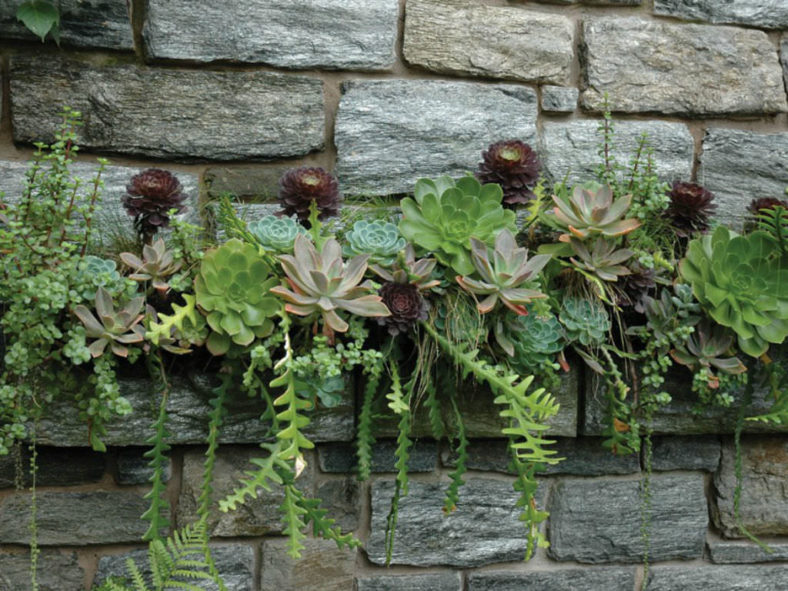Succulents are a popular gardening trend that will not be going out of style anytime soon. Enthusiasts love their geometric forms and exquisite, often intricate patterns and details. No longer viewed as just a desert or house plant, succulents can grow and thrive in a wide range of climates. In regions affected by drought, they are a smart drought-tolerant alternative to thirsty lawns and other water-guzzling plants.
Succulents can look great with minimal effort, but they still need some care and attention.
1. Do Not Overwater
You love your succulents so much and want to water them every other day to make them grow plump and lush. But what you will get is a soft, shriveled, squishy mess. Overwatering is a bigger problem for succulents than underwatering. Roots can rot. If it is too late, look for healthy tissue, take some cuttings, allow the cut end to callus, and replant it. Get rid of the soil in which the oversaturated succulent was.
2. Do not Neglect
Succulents are desert-like plants that do not need to be watered, like, ever—right? Wrong. Their watering needs are minimal, but they still need it to survive. If you live in a region that doesn't receive much rain, water succulents regularly during their periods of active growth. This would be spring through fall.
Container plants can be watered about once a week.

3. Group Plants with Similar Water Needs
Do not plant succulents next to super-fussy perennials that require fertile soil and frequent watering. Ideally, you want a drought-tolerant, low-water area in your garden, a moderate-water area, and so on. It makes things easier for you, and your plants will be happier.
4. The Right Soil
Succulent soil mixes are available by the bag at nurseries and home centers. While it is helpful for container plants, especially those used as houseplants, it is not always practical or necessary for succulents planted in the garden. Learn more about the type of soil in your yard, and add amendments to make it fast-draining and on the dryer side.
While some succulents are forgiving and will grow almost anywhere, even in clay, it is best to give them optimal growing conditions for healthy roots and beautiful plants.
5. Shed Some Light
Most succulents need a mix of sunlight and shade to grow healthy. Neither extreme will result in a beautiful, happy plant. Learn about your specific succulent light requirements and find the ideal spot in your garden.
6. Protect from Frost
Most succulents go dormant during winter, when they do not require watering. Watering them during the dormant season can make their roots more susceptible to rot and kill them. What they like is a cool and dry climate.
If your area is experiencing heavy rainfall and your succulents are in pots, move them under eaves to avoid over-saturation or bring them inside.
Frost is another matter. Pay attention to freeze warnings. Cover with a cloth or plant under a tree, which protects succulents during the winter.
7. Put Succulents in the Ground
Some people think succulents are houseplants, and when grown outdoors, they must be relegated to containers. At the same time, they look great in a well-designed container arrangement. Succulents, like any other plant, love to be planted in garden beds where they can be fruitful and multiply. In warmer regions that do not experience freezing temperatures during the winter, succulents can thrive growing in the ground or raised beds.
Some are so forgiving of soil conditions that they can grow almost anywhere with at least some soil to which they can attach their roots.
8. Allow to Callus Before Transplanting
Succulents are one of the easiest plants to propagate. Take a snippet, some leaves, a stem, an offset, or a "baby," and place it in the soil or another pot. But before you do, allow the stem to callus for a few days to prevent rot. This can be done by placing cuttings or a paper towel and leaving them for up to 5 days, or by putting them in a container or other location where you will remember to replant them.
9. Get Rid of Harmful Insects
One thing is sure: your succulent is not looking good. Symptoms include buds that will not open, distorted growth, cotton-like attachments to roots, tiny insects on new growth, paprika-like dots on leaves, brown bumps on stems, collapsed outer leaves, and holes in leaves.
The culprit? Insects. Some gardeners believe that hardy succulents are resistant to insects—not so. Consult a master gardener site online or get one of the books about succulents to help you identify the symptoms, insects, and solutions.
10. Protect from Disease
One sign of disease in succulents is an orangeish, cancerous-like growth near or on the stem. It has probably become infected by a microscopic mite. To treat, remove the infected tissue and put the succulent in a separate container until new, healthy growth appears. Remember to clean your tools after using them on infected succulents to prevent spreading to other plants.
Source: thespruce.com
Links
- Succupedia: Browse succulents by Scientific Name, Common Name, Genus, Family, USDA Hardiness Zone, Origin, or cacti by Genus